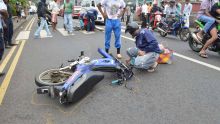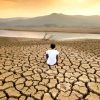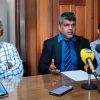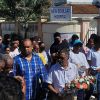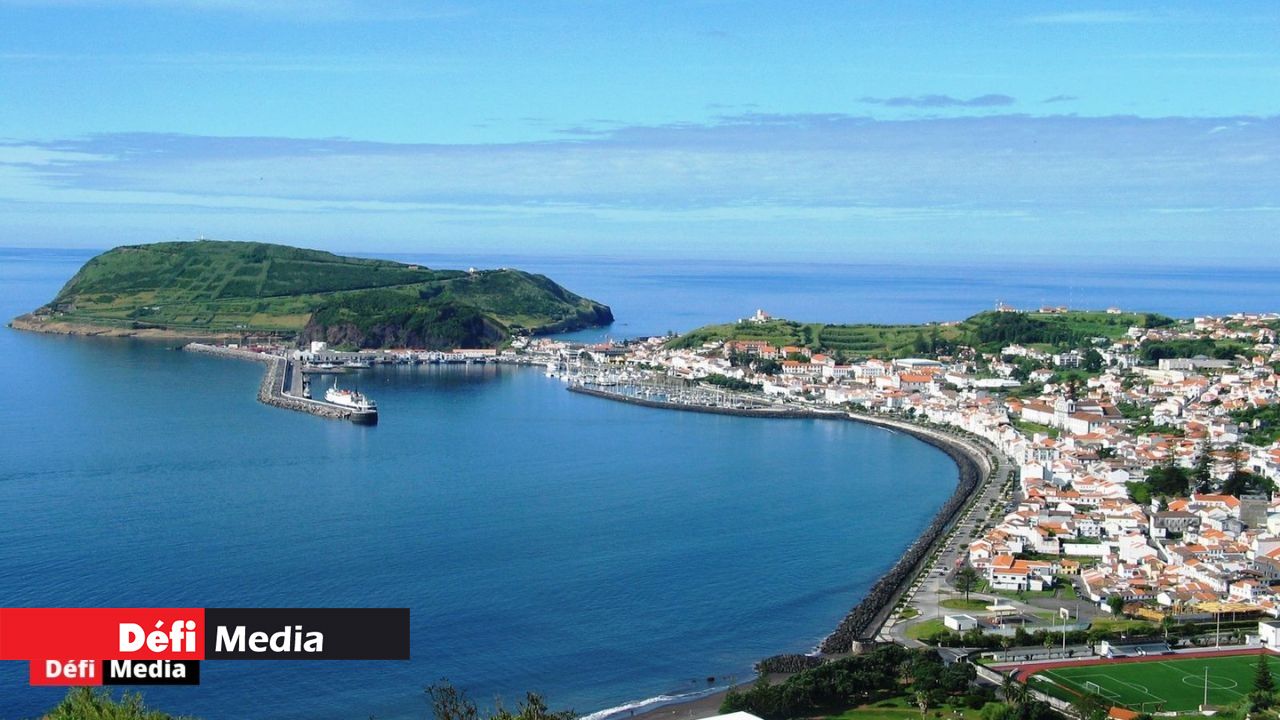
The Fourth International Conference on Small Island Developing States (SIDS 4), 27-30 May 2024.
(Petits États insulaires en développement, PEID)
• THE FIRST INTERNATIONAL CONFERENCE ON SIDS convened in BARBADOS 1994. The Conference adopted the Barbados Programme of Action for Small Island Developing States (BPOA).
• SECOND INTERNATIONAL CONFERENCE ON SIDS was held in MAURITIUS in 2004.
• THE THIRD INTERNATIONAL CONFERENCE ON SIDS convened in APIA, SAMOA, 2014.
• THE FOURTH INTERNATIONAL CONFERENCE ON SIDS will gather in ANTIGUA 27-30 MAY 2024.
Small island developing states (SIDS) are on the frontline of climate change AND sea-level rise. They feel the impacts first and most severely, yet they barely contribute to global greenhouse gas emissions. Not only are they vulnerable to devastating cyclones, which are becoming more frequent and extreme, but their dependence on food and energy imports, and tourism revenue, increase their vulnerability to external shocks.
With this in mind, the 1992 UN Conference on Environment and Development (Earth Summit of Rio) recognized SIDS as a “special case” and a distinct group facing common social, economic, and environmental threats. Furthermore, the Earth Summit called for greater international cooperation on SIDS, including convening an international conference on the sustainable development of SIDS. Which happened in 1994.
SIDS are a group of 39 UN Member States and 20 Associate Members of United Nations that face unique social, economic, and environmental vulnerabilities. The aggregate population of all the SIDS is about 70 million, about 1% of the world’s population, spread over 1,000 islands. Some island states are made up of many islands (such as the Republic of Mauritius with about 12 islands including Mauritius, Rodrigues, Agalega, St Brandon, Diego Garcia), many so far apart the governments cannot deliver low-cost public and social services to all citizens.
Despite many similarities, SIDS are quite diverse. They are located across five geographic regions: the Caribbean; the Pacific; and the Atlantic, Indian Ocean and South China Sea. They have diverse income levels, population densities, geographic spread, and levels of development. Five are considered lower middle-income and 19 are upper middle-income countries such as Mauritius and Seychelles.
SIDS differ concerning the structure of their economies. Some are more service based, such as the Bahamas and Barbados, while others are more natural resource-based, such as Trinidad and Tobago and Papua New Guinea.
Population size ranges from only 12,000 people in Tuvalu to over 11 million in Haiti, the Dominican Republic and Cuba. The smallest of the Associated Members, Niue, has just under 2,000 people. Land area also varies. Papua New Guinea has a land area of 462,800 km2, while Nauru is just 20 km2. Some countries are archipelagos dispersed over a broad ocean area. For example, Kiribati has an area of 810 km2 distributed in 35 atolls/islands spread over 3.6 million km2 of ocean.
SIDS also have many commonalities. Economically, small domestic markets and a narrow natural resource base result in many challenges, including an inability to diversify the economy, limits for achieving economies of scale, reduced opportunities for private sector development, and economic shocks. Many SIDS face high import and export costs for goods as well as irregular international traffic volumes. Yet, they must rely on external markets for many goods due to their narrow resource base. This impacts both economic growth and job creation.
Furthermore, infrastructure costs—including for energy, communication, and transport—are high, particularly in the more remote islands.
Environmentally, SIDS are characterized by fragile natural environments that are particularly vulnerable to the impacts of climate change, including extreme weather events, sea level rise, storm surge, drought, and landslides. Their Exclusive Economic Zone (EEZ) is, on average, 30 times the country’s land mass, leading some to refer to SIDS as “large oceans.” For many SIDS, most of their natural resources come from the ocean.
While the total land area of SIDS is less than 0.5% of the world’s surface area, they are home to more than 20% of the world’s biodiversity, and 40% of the world’s coral reefs. Biodiversity sustains many people’s livelihoods, especially since the tourism and fisheries industries often constitute over half of the gross domestic product (GDP) of small island economies. For centuries, SIDS have benefitted from biodiversity for their food supply, clean water, reduced beach erosion, soil and sand formation, and protection from storm surges. Yet, their biodiversity is at risk from depleting fish stocks, coral bleaching, and pollution, among other threats.
Between 1850 and 2020, SIDS were responsible for just 0.02% of total CO2 emissions from fossil fuels, compared to 35% for the United States alone. Yet the endure some of the worst impacts of climate change. From 1970 to 2020, according to a recent UND Report, SIDS lost USD 153 billion due to weather, climate, and water-related hazards—a significant amount given that the average GDP for SIDS is USD 13.7 billion. For those SIDS whose land lies five meters or less above sea level, projected sea-level rise represents a direct threat to their very existence. Due to sea level rise, some SIDS may no longer exist by the turn of the century.
WHAT DID THE FIRST THREE CONFERENCES ON THE SUSTAINABLE DEVELOPMENT OF SIDS ACCOMPLISH?
BARBADOS: The Conference adopted the BARBADOS PROGRAMME OF ACTION FOR SMALL ISLAND DEVELOPING STATES (BPOA), which identified priority areas and specific actions necessary to address the challenges faced by SIDS. The BPOA noted SIDS were particularly vulnerable to climate change, climate variability, and sea-level rise and stressed that “any rise in sea level will have significant and profound effects on their economies and living conditions; the very survival of certain low-lying countries will be threatened.”
In addition to addressing natural resources management, tourism, waste management, and transport, among many others, the BPOA highlights 14 priority areas and specific actions necessary for addressing the special challenges faced by SIDS:
• climate change and sea-level rise
• natural and environmental disasters
• management of wastes
• coastal and marine resources
• freshwater resources
• resources
• energy resources
• tourism resources
• biodiversity resources
• national institutions and administrative capacity
• regional institutions and technical cooperation
• transport and communication
• science and technology
• human resource development
The Barbados Declaration, which was also adopted at the Conference, called for the international community to cooperate with SIDS in the implementation of the BPOA by providing effective means, including:
• adequate, predictable, new and additional financial resources;
• facilitating the transfer of environmentally sound technology, including on concessional and preferential terms as mutually agreed; and
• promoting fair, equitable and non-discriminatory trading arrangements and a supportive international economic system.
MAURITIUS: A comprehensive ten-year review of the BPOA took place at the Mauritius International Meeting in Pailles Mauritius in December 2004/January 2005. Governments adopted the Mauritius Strategy (MSI) for the further Implementation of the BPOA to address remaining gaps in implementation. The MSI agreed on actions and strategies in 19 different priority areas. These built on the original 14 thematic areas of the BPOA and added new thematic areas including graduation from least developed country (LDC) status. Other new areas were trade, sustainable production and consumption, health, knowledge management, and culture. These new areas were aimed to support SIDS in achieving other international goals and targets, particularly the Millennium Development Goals.

SAMOA: The Third International Conference on SIDS convened in Apia, Samoa, in 2014
The SAMOA Pathway supports the sustainable development of SIDS through these priority areas:
• Promote sustained and sustainable, inclusive, and equitable economic growth with decent work for all, sustainable consumption and production, and sustainable transportation;
• Act to mitigate climate change and adapt to its impacts by implementing sustainable energy and disaster risk reduction programmes;
• Protect the biodiversity of SIDS;
• Improve human health and social development through food security and nutrition, improved water and sanitation, reducing the incidence of non-communicable disease and by promoting gender equity and women’s empowerment; and
How do you measure the vulnerability of SIDS?
Since the 1992 Earth Summit and at each of these conferences held over the past 30 years, SIDS have argued that traditional measures of development, such as gross national income (GNI) per capita, do not effectively capture their unique vulnerabilities.
While each of the three SIDS conferences has reflected on this issue, the SIDS have consistently called for the development of a globally accepted vulnerability index. The Alliance of Small Island States (AOSIS) called on the UN Secretary-General to advance work on a MULTIDIMENSIONAL VULNERABILITY INDEX (MVI).
The Panel defined a conceptual framework for the MVI which captures two pillars or domains of vulnerability: (i) structural vulnerability and (ii) (lack of) structural resilience.
ANTIGUA: The Fourth International Conference on Small Island Developing States (SIDS4) convenes in St John’s, Antigua, in May 2024. With a focus on critical SIDS-specific challenges including the climate crisis, biodiversity loss, and spiraling debt, world leaders, the private sector, civil society and young people will meet to advance new ideas, raise new pledges of support and cover critical issues for the future of SIDS, such as economic revitalization, climate finance, aid effectiveness, data and digital innovation, as well as health and youth.
The Antigua SIDS 4 Conference AIMS to culminate in the adoption of a new 10-year plan for SIDS, 2024-2034.
International conferences every ten years, however, are not enough. Without greater international support and improved economic, social, and environmental resilience, these small island states face an uncertain future as climate change hangs over them like an approaching tidal wave.
Dr Michael ATCHIA
Participant in SIDS 2(2004) and invitee to SIDS 4(2024)
(Based on various sources, including P.Chasek, Earth Negotiations Bulletin, UNFCCC, South Centre Bulletin and ISC)

Notre service WhatsApp. Vous êtes témoins d`un événement d`actualité ou d`une scène insolite? Envoyez-nous vos photos ou vidéos sur le 5 259 82 00 !














